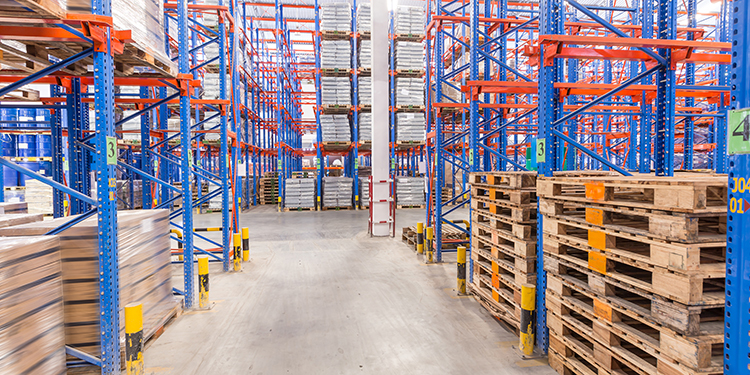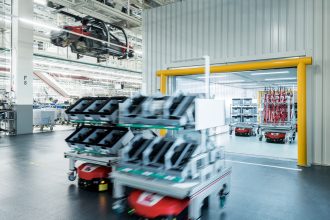Key Considerations For Drive-In Rack Design, Use

Ideal for maximizing the available cube within a facility, drive-in rack is designed and engineered for highly dense storage of multiple pallets of uniform product. Because it eliminates multiple travel paths and access aisles, drive-in rack can create additional pallet storage positions for a more effective use of a building’s footprint. Before adding such a structure to a warehouse or distribution center, however, it’s important to keep a few considerations in mind. These include:
- Drive-in rack supports a last-in/first-out (LIFO) inventory management strategy. Because it must be loaded back to front (and unloaded in the opposite manner), drive-in rack is not suitable for products that require a high degree of selectivity or picking frequency.
- Drive-in rack is engineered purposely to accommodate counterbalanced forklifts matching certain dimensions with appropriate clearances between columns, under rails, and between baseplates. Using a larger vehicle or one with fixed outriggers for load stability, such as a straddle truck or stacker, will damage the rack.
- The dimensions of drive-in rack openings, column placement, rail width and pallet position heights are engineered to match a specific pallet width. It is also important to make sure the fork truck can fit between the rails. While typically it is recommended that only one size pallet be used within a given drive-in rack system, systems can be designed to accommodate two pallet widths. To prevent operator confusion, however, it is suggested that operations looking to use more than one pallet size with drive-in racking consider a second, separate system sized to match the different pallet. This maximizes space utilization and ensures that pallets do not fall between the rails. Additionally, only pallets with intact bottom boards (no cracks, splits or damage) should be placed within drive-in rack to reduce the risk of pallet failure under load.
- Forklift operators must be trained on the proper best practices for safely loading and unloading drive-in rack, as these structures require the load to be lifted to its ultimate designated position height prior to the vehicle entering the rack. Continually train drivers to enter and back out of the structure at a controlled speed and with caution, particularly as they back into the aisle, where there is potential for a cross-traffic collision. Additionally, aisles must be wide enough to accommodate the counterbalanced forklift’s need to maneuver to a position 90° perpendicular to the rack prior to entering it.
- Because drive-in rack structures are designed with upright frames, rails, and ties (but no horizontal beams except at the very top and across the back), they are engineered with columns and baseplates that meet specific stability and rigidity requirements. That is, they tend to be heavier and use more anchors to connect the system to the floor. Consider requesting additional protective measures designed into the front entrance columns and arms of drive-in rack, as those components are the most likely to be impacted by forklift traffic and loads. Many manufacturers offer more robust columns and base plates, as well as an extra flared width on the rail at the entrance point to provide supplementary guidance in pallet positioning.
- While most drive-in rack structures can be engineered with 3-inch columns for adequate stiffness and stability, systems that exceed 21 feet in height should be designed with 4-inch columns for strength. While the extra material can impact the overall cost of the system, the resulting gains in storage space may offset that expense.
- Operations seeking extra-deep drive-in racking of 10 positions or more should consider a dual-entry system with five positions each placed back-to-back. This reduces the distance a forklift must travel into the racking to place or retrieve a load, lowering the risk of a column impact.
Have more questions about drive-in rack and whether it’s a good fit for your operation? The members of RMI are available to answer questions and offer guidance on this and many other industrial steel storage rack questions.


